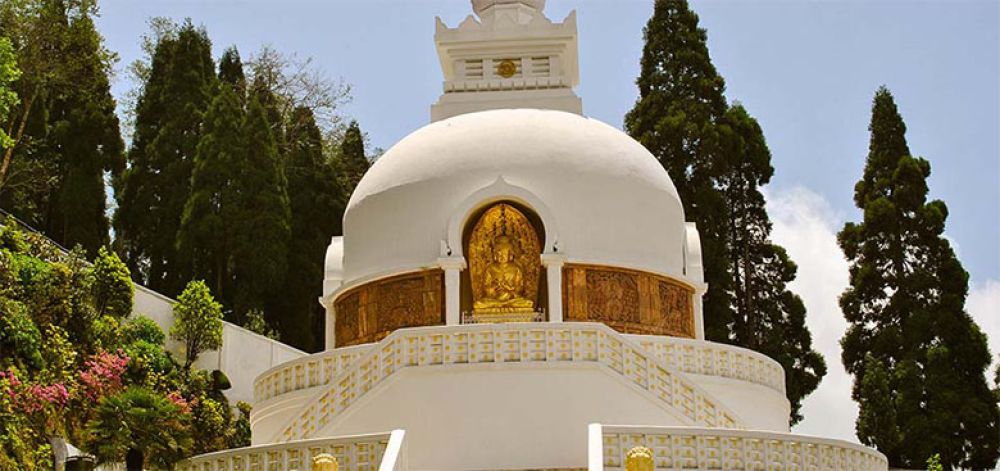

Darjeeling, a hill station in West Bengal, India, has long been known for its picturesque landscape, tea gardens, and colonial-era architecture. Among its most serene landmarks is the revered Peace Pagoda. This spiritual monument, designed to promote peace and tranquility, transcends religious barriers, inviting visitors from all walks of life to experience its calming presence.
The Darjeeling Peace Pagoda, or Shanti Stupa, was established under the guidance of Nichidatsu Fujii, a Buddhist monk from Japan, who was inspired by his meeting with Mahatma Gandhi in 1931. He embarked on a mission to construct Peace Pagodas all around the world as a symbol of world peace and non-violence. The cornerstone for the Darjeeling Peace Pagoda was laid on November 3, 1972, and it was consecrated on November 1, 1992.
The structure stands at a height of about 28.5 meters and spans approximately 23 meters in diameter. The pagoda is festooned with four avatars of the Buddha, carved from sandstone and elegantly placed to watch over the four cardinal directions. It has emerged as a symbol of unity, showcasing the coexistence of different faiths and communities in Darjeeling.
As Darjeeling grew in stature as a favored hill resort during the British era, the region's Buddhism-inspired architecture began to attract curious travelers. The establishment of the Peace Pagoda added a new dimension to this rich tapestry, blending spirituality with tourism.
Tourists from all over the world started flocking to this site shortly after its inauguration, keen to witness the magnificent white structure that stands against the backdrop of the Kanchenjunga range. The aesthetically designed stupas, enshrining golden effigies of Lord Buddha, narrate tales of his life and teachings.
In recent times, the trend in tourism at the Peace Pagoda focuses on seeking solace and a spiritual experience amidst the hustle of daily life. Visitors engage in contemplative walks around the dome, often participating in prayer sessions or just enjoying the panoramic vistas of the surrounding hills and valleys.
Cultural tourism has also seen an upsurge with many enthusiasts seeking deeper understanding of the region's spiritual heritage and the significance of the pagoda. Moreover, the Peace Pagoda is now a pivotal part of Darjeeling's city tours, cultural programs, and photography expeditions due to its architectural splendor and scenic beauty.
Ecotourism is another emerging trend, promoting sustainability and environmental responsibility. Darjeeling, including the Peace Pagoda, is witnessing an increase in eco-conscious travelers who are keen on contributing to the conservation of the area's natural and cultural resources.
Overall, the Peace Pagoda remains a memorable and essential part of Darjeeling's tourism history, drawing in those who seek serenity, cultural insight, and historic beauty all in one place.
Opening hours: The Peace Pagoda is open to visitors throughout the year, usually from early morning till the evening.
Best time to visit: The best time to explore the Pagoda is between March to May and September to November, when the weather is most pleasant and the skies are likely to be clear, offering breathtaking views of the surrounding peaks.
Getting there: The Peace Pagoda is situated atop the Charlimont Hill in Darjeeling and is accessible by car, taxi, or a short hike from the center of the town, making it a convenient visit for all travelers.
With its peaceful ambiance and scenic location, the Peace Pagoda continues to captivate and inspire visitors on their journey through Darjeeling's rich tapestry of cultural and historical experiences.